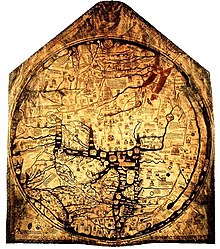Semi-periphery countries: Difference between revisions
D.j.weingart (talk | contribs) added a pic |
D.j.weingart (talk | contribs) No edit summary |
||
| Line 12: | Line 12: | ||
==Semi-periphery Nations, 1875-1914== |
==Semi-periphery Nations, 1875-1914== |
||
The West represented both the core, and the semi-periphery, as Europe dominated 80% of the world's market share. The rest of the world was a diverse periphery, with the exception of only some nations, like Japan. As expansionism continued, new core nations emerged, such as Britain, Germany, and the United States, while old cores such as Spain and Portugal faded to the semi periphery.<ref>Hobsbawn, Eric. The Age of Empire. New York: Random House, 1987. Print.</ref> The growth of the power of the common man led to an expansion of thought concerning democracy, communism, and revolution, which pervaded the weaker semi periphery nations overcome with civil distress. In some, this led to the weakening of the nations, such as the violent revolution in France. This contributed to the adoption of totalitarian leaders, like in Germany and France. The one the major factors contributing to world war were the conflicts and power stuggles taking place between the three classes of nations in the global system. Nations considered part of the Semi periphery felt oppressed by the stronger, larger core nations. |
[[File:Royal Irish Rifles ration party Somme July 1916.jpg|thumb|A ration party of the Royal Irish Rifles in a communication trench during the Battle of the Somme.]] The West represented both the core, and the semi-periphery, as Europe dominated 80% of the world's market share. The rest of the world was a diverse periphery, with the exception of only some nations, like Japan. As expansionism continued, new core nations emerged, such as Britain, Germany, and the United States, while old cores such as Spain and Portugal faded to the semi periphery.<ref>Hobsbawn, Eric. The Age of Empire. New York: Random House, 1987. Print.</ref> The growth of the power of the common man led to an expansion of thought concerning democracy, communism, and revolution, which pervaded the weaker semi periphery nations overcome with civil distress. In some, this led to the weakening of the nations, such as the violent revolution in France. This contributed to the adoption of totalitarian leaders, like in Germany and France. The one the major factors contributing to world war were the conflicts and power stuggles taking place between the three classes of nations in the global system. Nations considered part of the Semi periphery felt oppressed by the stronger, larger core nations. |
||
==Examples of semi-periphery countries== |
==Examples of semi-periphery countries== |
||
Revision as of 22:16, 1 November 2009

In world-systems theory, the semi-periphery countries (sometimes referred to as just the semiperiphery) are the industrializing, mostly capitalist countries which are in the process of transforming from the periphery countries into core countries.
Contemporary nations of the semiperiphery are industrialized. Semi-periphery countries are major exporters of minerals and agricultural goods. They major in manufacturing and also export industrial goods and commodities. However, they lack the power and the economic dominance of core nations and still have a lot of unmanaged poverty. They tend to be bigger in land mass, like for example China, because more landmass generally means a bigger market.
Functions of the Semi-periphery
The semi periphery is needed to stabilize the system. It absorbs the shock between the low-income periphery states and the high-income core states. They act as a political buffer. Some of these areas had been core-areas of earlier versions of a given world-economy. Some had been peripheral areas that were later promoted, so to speak, as a result of the changing geopolitics of an expanding world-economy.[1]
Semi-periphery nations are a necessary structural element in a world-trade system. They serve to let off the steam of the global political system. The semi-periphery can serve to the political pressures that the core can exert upon the periphery, and the political unrest that the periphery can direct back at the core. On the other hand, the semi-periphery can find itself excluded from the political systems, as it lies just outside of the bounds of political arena of the core states.[2]
Origin of the Semi-periphery in Sociological Theory
World-systems theorists originally used only the two categories - periphery countries and core countries, but a need for "in between" category became quickly apparent. Hence the semi-periphery category was introduced for societies that moved away from the periphery but have not became core, in other words, societies that remained dependent, and to some extent underdeveloped, despite having achieved significant levels of industrialization.
Semi-periphery Nations, 1875-1914

The West represented both the core, and the semi-periphery, as Europe dominated 80% of the world's market share. The rest of the world was a diverse periphery, with the exception of only some nations, like Japan. As expansionism continued, new core nations emerged, such as Britain, Germany, and the United States, while old cores such as Spain and Portugal faded to the semi periphery.[3] The growth of the power of the common man led to an expansion of thought concerning democracy, communism, and revolution, which pervaded the weaker semi periphery nations overcome with civil distress. In some, this led to the weakening of the nations, such as the violent revolution in France. This contributed to the adoption of totalitarian leaders, like in Germany and France. The one the major factors contributing to world war were the conflicts and power stuggles taking place between the three classes of nations in the global system. Nations considered part of the Semi periphery felt oppressed by the stronger, larger core nations.
Examples of semi-periphery countries
See also
Further reading
- Kaplan, David H.; Wheeler, James O.; Holloway, James O. Urban Geography. York, PA: John Wiley & Sons, Inc., 2004., pg. 412.
- Windows on Humanity by Conrad Phillip KOTTAK. Chapter 17, page 390.
